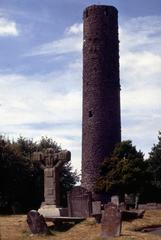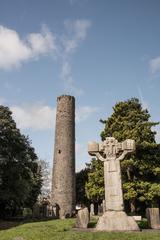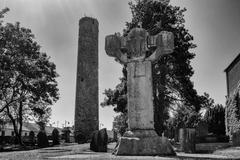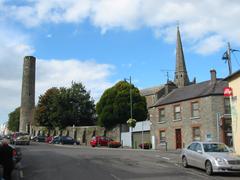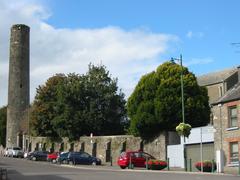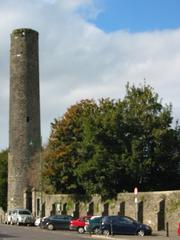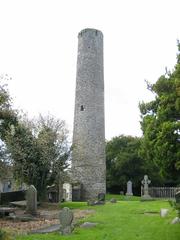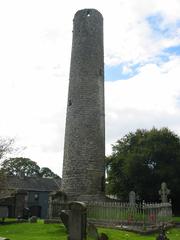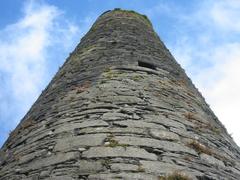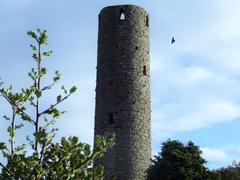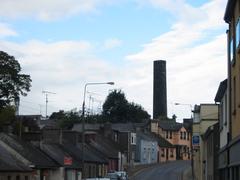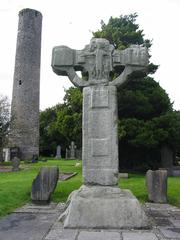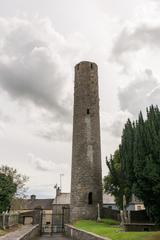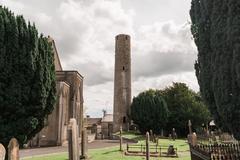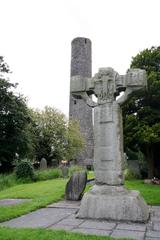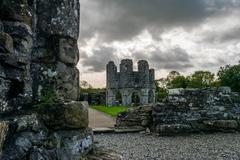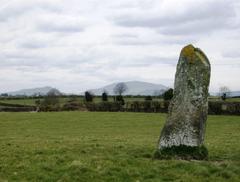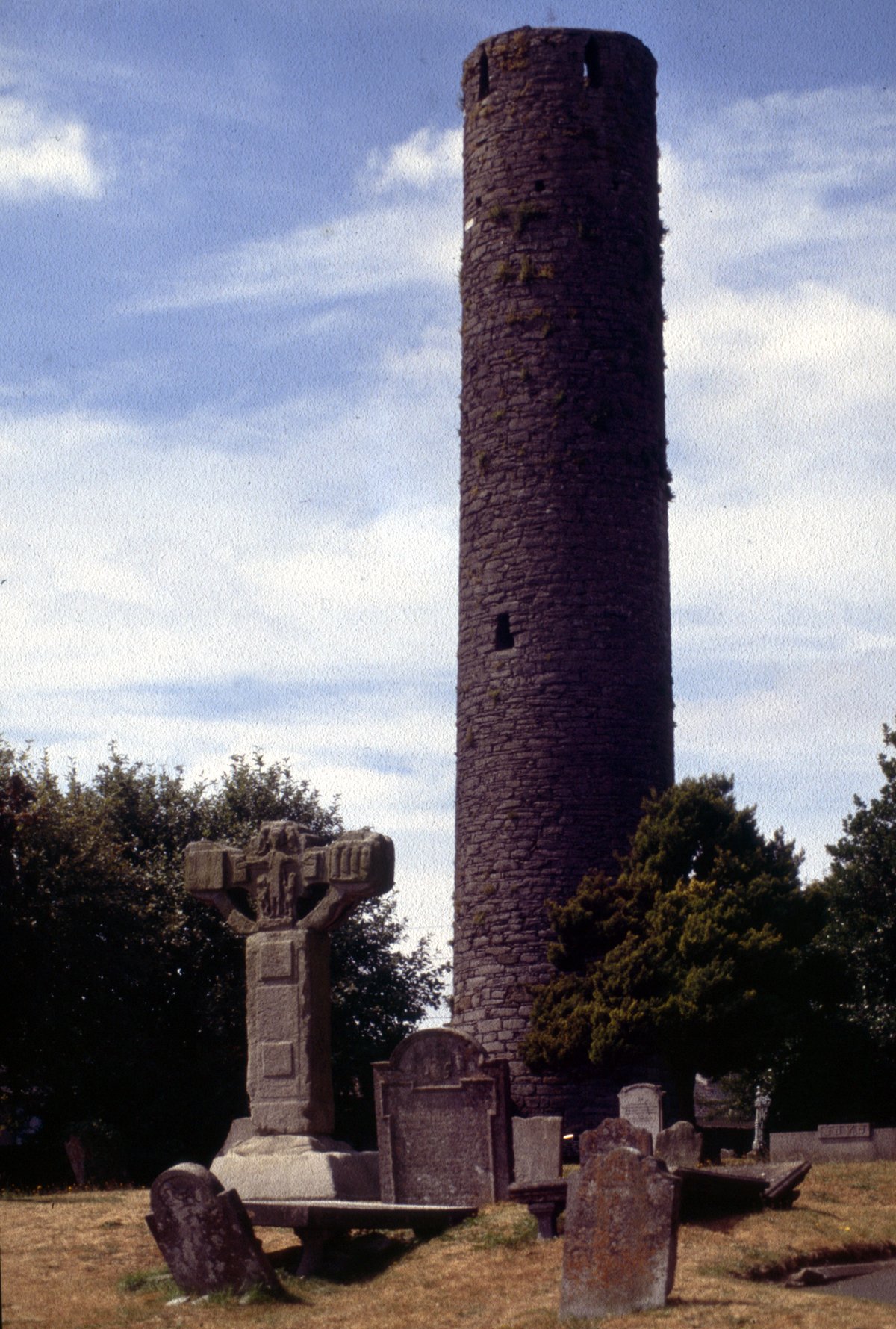
Kells Round Tower Visiting Guide: Hours, Tickets, and Historical Insights
Updated Date: 01/08/2024
Introduction to Kells Round Tower
Nestled in the heart of County Meath, Ireland, the Kells Round Tower stands as a testament to the country’s rich medieval history and architectural prowess. This historic monument, located in Kells, offers visitors a unique glimpse into Ireland’s past, from its origins as a monastic settlement to its role during the tumultuous times of Viking raids. The Kells Round Tower, along with the surrounding high crosses and other monastic features, provides an intriguing snapshot of early Christian Ireland. Visitors can explore this fascinating site, learn about its historical significance, and appreciate the intricate artistry of the high crosses. This guide aims to provide comprehensive information about visiting the Kells Round Tower, including historical context, practical visitor tips, and insights into nearby attractions. Whether you’re a history enthusiast or a casual traveler, this guide will help you make the most of your visit to this iconic Irish landmark (Historical Ragbag, Discover Boyne Valley, The Irish Road Trip).
Sections Overview
- Introduction
- Historical Background
- Early Monastic Settlement
- Re-establishment and Viking Raids
- Construction of the Round Tower
- Architectural Significance
- High Crosses and Other Monastic Features
- Historical Events
- The Book of Kells
- Visitor Information
- Visiting Hours
- Tickets
- Travel Tips
- Nearby Attractions
- Preservation and Modern-Day Significance
- FAQ
- Conclusion
Historical Background
Early Monastic Settlement
The history of Kells Round Tower is deeply intertwined with the monastic settlement of Kells, which dates back to the 6th century. The site was originally a fortification of the High King Diarmait mac Cerbaill, who gifted it to Saint Columba (also known as Colmcille) around 550 AD. Saint Columba, born to the ruling family of present-day Donegal, founded the abbey that remains a significant historical site today (Historical Ragbag).
Re-establishment and Viking Raids
The Abbey of Kells was re-founded in the early 9th century by monks from Iona, who fled Viking raids. The first church at Kells was completed by 814 AD, and in 878 AD, the relics of Saint Columba were relocated from Iona to Kells, which was now prospering (Discover Boyne Valley). However, Kells itself was not immune to Viking attacks and was raided multiple times in 919, 950, and 969 AD, and throughout the 11th century by both Vikings and the Irish (Discover Boyne Valley).
Construction of the Round Tower
The Kells Round Tower was constructed during the 10th century, a period marked by the establishment of many similar towers across Ireland. These towers served multiple purposes, including acting as bell towers, symbols of ecclesiastical importance, and possibly as watchtowers for defense against Viking raids (The Irish Road Trip). The Kells Round Tower stands at a height of 25 meters (approximately 90 feet) and originally had a conical roof, which is now missing (Discover Boyne Valley).
Architectural Significance
The Kells Round Tower is notable for its architectural features. It has six floors and would have been accessed by ladders. Unlike many other round towers, Kells’ tower is unique in that it has five windows on the top floor, one for each cardinal point and one overlooking the main road (The Irish Road Trip). The tower’s stonework is largely original, with very few minor repairs, and it remains a prominent feature in the landscape of Kells (The Irish Road Trip).
High Crosses and Other Monastic Features
Surrounding the Kells Round Tower are several finely carved high crosses, which date back to the 9th and 10th centuries. There are five high crosses in Kells, with four located within the grounds of St. Columba’s Church and the fifth, known as the Market Cross, situated near the Old Court House Heritage Centre (The Irish Road Trip). These crosses are significant examples of early medieval Christian art in Ireland and vary in their state of preservation.
Historical Events
The Kells Round Tower has been a witness to several significant historical events. In 1076, Murchadh Mac Flainn, who was fighting for the High Kingship of Ireland, was murdered in the tower (Discover Boyne Valley). The tower and the surrounding monastic site have also been depicted in etchings from the late 1700s, showing the tower much as it is today (Historical Ragbag).
The Book of Kells
One of the most famous treasures associated with the monastic community of Kells is the Book of Kells, a highly ornate version of the four gospels in Latin. Written around the year 800, it remains unclear whether the book was written in whole or part at Kells. The Book of Kells is now housed in Trinity College, Dublin, but its origins are deeply rooted in the monastic history of Kells (Discover Boyne Valley).
Visitor Information
Visiting Hours
The churchyard where the Kells Round Tower is located is open to the public year-round. Check the official website for the most up-to-date information on visiting hours.
Tickets
Entry to the churchyard is generally free, but guided tours might have a fee. Please refer to the official website for current ticket prices.
Travel Tips
Kells is easily accessible by car and public transport. Ample parking is available nearby.
Nearby Attractions
Don’t miss other historical sites in the Boyne Valley area, such as the Hill of Tara and Newgrange.
Preservation and Modern-Day Significance
Today, the Kells Round Tower and the high crosses are designated as National Monuments, reflecting their historical and cultural significance. The site is part of the Boyne Valley Drive, a popular tourist route that highlights many of the best historical attractions in County Meath and County Louth (The Irish Road Trip). The churchyard where the tower is located is open to the public year-round, allowing visitors to explore these ancient structures up close (The Irish Road Trip).
FAQ
What are the visiting hours for the Kells Round Tower?
The churchyard where the Kells Round Tower is located is open to the public year-round. Check the official website for the most up-to-date information on visiting hours.
How much are the tickets to visit the Kells Round Tower?
Entry to the churchyard is generally free, but guided tours might have a fee. Please refer to the official website for current ticket prices.
What are some nearby attractions?
Other historical sites in the Boyne Valley area include the Hill of Tara and Newgrange.
Conclusion
The Kells Round Tower stands as a testament to the rich monastic heritage of Kells, County Meath. From its early beginnings as a monastic settlement founded by Saint Columba to its role in the turbulent history of Viking raids and its architectural significance, the tower and its surrounding features offer a fascinating glimpse into Ireland’s medieval past. Whether you’re a history enthusiast or a casual visitor, this site has something to offer. Download our mobile app Audiala for more historical insights and follow us on social media for the latest updates and travel tips (Historical Ragbag, Discover Boyne Valley, The Irish Road Trip).
